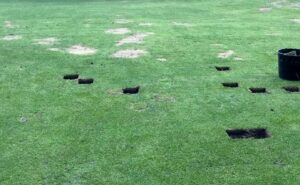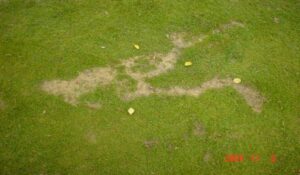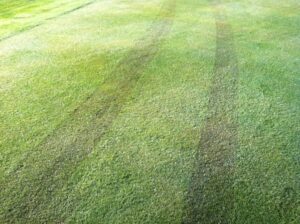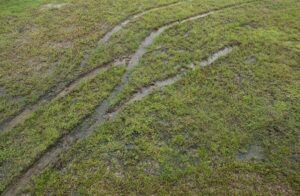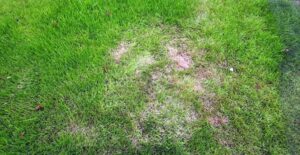What is the difference between abiotic and biotic stress?
Related Articles
Abiotic stress in a plant is something all greenkeepers have to deal with. But how do you know it’s not biotic stress, why is that important and what can you do about it? Dr John Dempsey PhD provides answers.
Turfgrass stress is something turf managers must deal with constantly. Maintaining optimum quality playing surfaces requires a high level of management expertise. Numerous cultural practices are required, as well as finely balanced nutritional and irrigational inputs. While all these practices allow for the high standards expected, it also means our turfgrasses are often on a knife edge, balanced between healthy plants and those stressed from low inputs and disruptive management practices.
Abiotic stress factors are numerous, many times it is either too much or too little of something! Abiotic stress may result in poor quality surfaces due to growth inhibition, damage to cell structures and metabolic dysfunction. Often it is from extreme environmental conditions, such as high or low temperatures, soil compaction, excessive or low light, flooding or deficient water. Sometimes it can be caused by nutrient deficiency, incorrectly applied pesticides or fertiliser, or even excessive traffic. It’s worth noting that damage can often look very similar to biotic stress, making diagnosis difficult, and that plants suffering from abiotic stress are in most cases significantly more susceptible to biotic stress.
How can you tell if the problem is abiotic and not biotic?
• Abiotic damage occurs on numerous plant species while biotic problems are more limited to a specific species.
• Abiotic damage does not spread to other plants over time, biotic diseases can spread throughout a single plant and neighbouring plants of the same species.
• Abiotic stress does not show presence of disease signs whereas biotic diseases sometimes show physical signs of a pathogen, like fungal growth, nematode cysts or the presence of insects.
Some abiotic stress factors and ways to help combat them.
• High humidity, excess water / flooding: observed by brown turfgrass following the outline of flooded areas; a scalded appearance.
Remedy: increase surface and soil drainage; soil grading; reduce irrigation inputs; reduce traffic.
• Drought: foot printing, leaf rolling, browning of turfgrass; tissue becomes brittle.
Remedy: Irrigate affected area; use a programme of surfactants; aerify to improve water infiltration, reduce traffic.
• High temperature: turfgrass with water-soaked and brown appearance.
Remedy: select heat tolerant grasses, syringe canopy to cool.
• Low temperature, frost injury: Straw-brown colour, bleached turfgrass appearance, crown hydration.
Remedy: top dressing; winter blankets; light watering when temperatures are above freezing.
• Chemical or fertiliser injuries: Remove soil; bioremediation; use activated charcoal to absorb chemical; apply pesticides according to label. Apply fertiliser during correct conditions and rate; apply evenly with correctly calibrated equipment.
Mowing height / frequency, disruptive practices such as aeration, dethatching, topdressing and excessive wear from foot and maintenance traffic are all factors that can have a detrimental effect and enhance abiotic stress, especially during environmental extremes, and should be monitored and adjusted accordingly.
Abiotic stress conditions can inhibit the growth and development of turfgrass leading to a decline in turf quality, root length and top-growth. While turf managers can do much to limit this damage, plants themselves will also respond! Turfgrasses will initiate complex defence mechanisms, producing secondary metabolites, leading to physiological and morphological responses at the molecular level, way too much to cover in detail today!
We can help this process. For example, silicon (Si) can act as a defence enhancer, improving the extent of these defence signals. Silicon has been shown to increase tolerance to drought and temperature extremes, UVB light, metal toxicity and to salt stress.
This was just a brief outline of abiotic stress and how we can respond to it.
Dr John Dempsey PhD was course manager at Royal Curragh Golf Club, Ireland’s oldest golf club, from 1993 to 2019. He has a first-class honours degree in turfgrass science from Myerscough College and a PhD in turfgrass pathology at the University of the West of England’s Centre for Research in Biosciences

